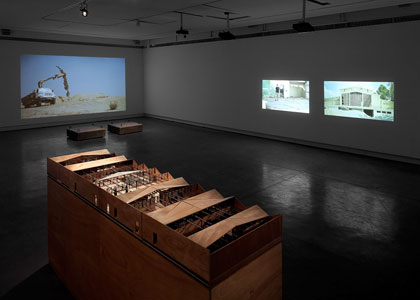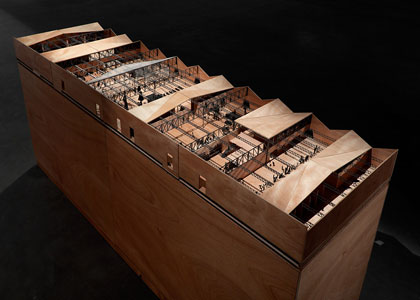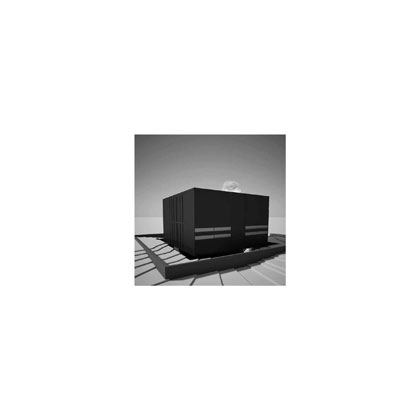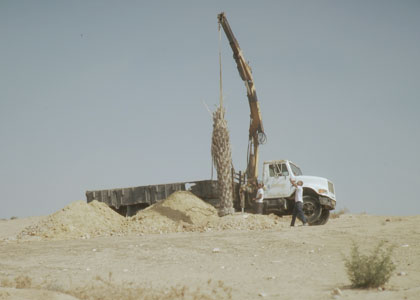Ofakim, Yosef-Joseph Dadoune
Curator: Drorit Gur Arie
09/02/2012 -
22/07/2012

In the past twelve years, Yosef-Joseph Dadoune’s work has emerged from and alluded to his childhood town of Ofakim. He makes films, collects archival materials, initiates guided tours, invites journalists, and tries to harness as many people as possible to deliver Ofakim from its status as a “non-place.” The product of “social engineering,” Ofakim is one of the instant towns that emerged in the area during the state’s nascent days, a city in which wages are still among the lowest in the country. Dadoune’s work is a one-artist guerilla commando, leaving documented marks in the field. At the same time, it is also a carefully planned strategy which intervenes in the communal everyday, while interweaving the local occurrence within the networks of the hegemonic center by exposing the ongoings in Ofakim to influential parties.
Launched in Ofakim, to which he returned in 2008, Dadoune’s In the Desert project is an ongoing act in multiple channels, including artistic practice and initiation of pedagogical and enrichment programs for youth; the jewel in the crown is the Of-Ar Project, designed to promote the transformation of the deserted, monumental textile factory which collapsed in 1988, into a new type of community space, reusing the building without destroying or renovating it—in collaboration with local entrepreneur Yitzhak Krispel, Efrat-Kowalsky Architects, and Dan Hasson. The “cultural hothouse” to be erected on site leaves the building as is, a multipurpose culture compound and a platform for unique relations between culture, leisure, employment, and business, based on recognition of the ability of art and architecture to influence social life. The renewed Of-Ar (if and when implemented) would form an architectural icon for the city of Ofakim, a flag-project which will enable its citizens to take an active part in cultural activity and contribute to the dynamic shaping of Israeli society.
Through critical scrutiny of the products of the Zionist melting pot, Dadoune’s activism endeavors to introduce a different social-cultural agenda. As part of a comprehensive program to empower youth and enhance their sense of belonging to the place, Dadoune worked with a group of youngsters in diverse enrichment workshops. Some of the participants were even cast as actors in the video Ofakim (2010). The film begins with the youth standing in “freeze” positions inside the Of-Ar factory, as if they were standing at attention in memory of its running days. It continues with a Sisyphean procession which invokes the cooperative spirit prevalent in the early days of settlement, while at the same time triggering military hazing.
In the film In the Desert (2009), Dadoune buries the identifying landmarks of the Zionist enterprise of “conquering the wilderness”—a palm tree and a cypress tree—in the ground. With bitter irony, he thereby alludes to the burial of the settlers who were cast to the frontier regions in the name of the “cloak of concrete and cement” vision and became pioneers against their will, a-priori ascribed to the social margins. In the series of films Horizon Fragments (2009), Ofakim is revealed as a ghost town where time has frozen. The orphaned deserted interiors of the Of-Ar factory are joined by the corpse of the only cinema in town—echoing the occupational and cultural void of Ofakim, which still awaits new life to be breathed into the material cobweb covering it.




